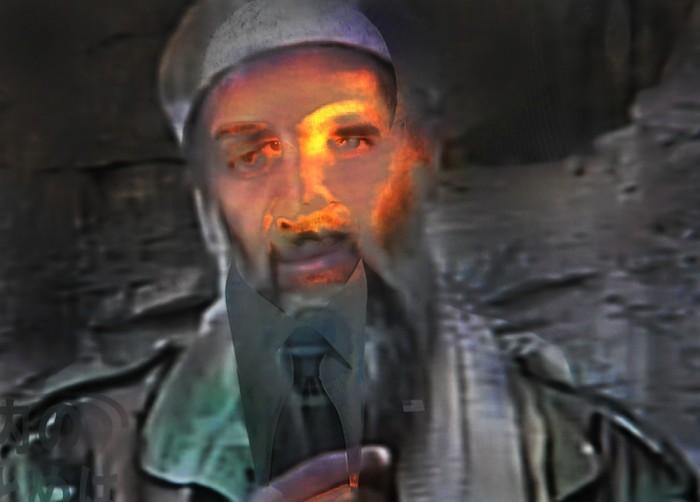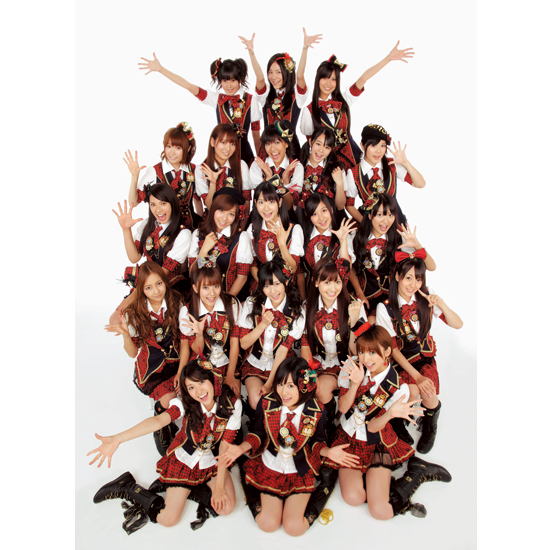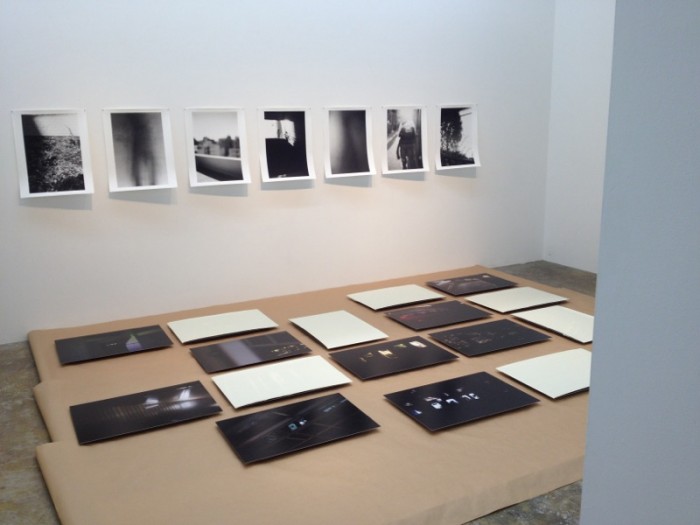
"2011, Osama bin Laden, Barack Obama, Qatar Al Jazeera-NHKbs TV" ©Kikuji Kawada Courtesy of Photo Gallery International
Kikuchi Kawada, “phenomena – 2011” at PGI
Kawada is known in the West for his classic book Map, but his new work deserves to be equally celebrated. As you can tell from the image above, he’s embraced digital technology in a very radical way. I was lucky enough to stumble into Kawada’s gallery talk, where he spoke eloquently about his current ways of working (including his great love of iPhoto slideshows) and the challenges of photographing today. At a glance, this series looks terrible, as if Kawada had just applied some bizarre Photoshop filters to his images at random, but he does know what he’s doing, claiming that he likes printing out his photos on inkjet printers because it adds to the digital effect of his work. I left thinking that this work could be easy to write off it was made by a 23-year-old photo student, but credit to Kawada for taking a risk. It’s encouraging to see an old master leading the way.

"AKB48, 2010"
Kishin Shinoyama, “The People” at Tokyo Opera City
This exhibit was not quite a retrospective of Shinoyama’s photographs—more like a jumble of his portrait work. Shinoyama is a skilled photographer, and I was hoping to learn more about the development of his work, but the selection was poor: the show consisted mostly of celebrity portraits, and it is ironic that, in the same room where Takashi Homma showed his photographs of McDonald’s around the world, Shinoyama put up monumental prints of Tokyo’s Disneyland. Apparently, it was the first time that a photographer had been allowed to take such images, and perhaps it was a thrill for some of the (numerous!) audience, but after paying 1000 yen I felt cheated to look at photographs shilling for Disney. In talking with others later, I came to understand better the value of Shinoyama’s portraits as a kind of nostalgia trip. Still, his post-3/11 portraits are unconscionable, as if he’d hopped out of a van and plunked his tripod down in front of the first few people he came across.

Installation view courtesy of Emmanuel Guillaud
Emmanuel Guillaud & Takano Ryudai, “Black Closer to White” at Yumiko Chiba Associates
An exhibition that derived its power from an experimental installation: Takano’s black and white photos were hung on a wall, while Guillaud’s almost colorless color photos were laid out underneath, some covered with white paper. Guillaud’s extremely dark images showed people on trains or otherwise glimpsed through Tokyo’s urban barriers, while Takano showed brighter photographs. Each body of work was quite subtle, requiring time to digest, and the unusual way of displaying these two series was successful in holding the gaze.
Daido Moriyama, “Labyrinth” at BLD
This exhibit was a pleasant exception to the idea that looking at a contact sheet will help you discover, in a romantic way, the “special” (OK, decisive) moment when the photographer’s vision perfectly met his or her subject. This is probably why someone thought it would be worth publishing the contact sheets of the Magnum photographers, the most romantic photographers of all. With Moriyama, though, there’s no romance: he shoots with a compact camera, but he is not trying to pick out “moments” in the Winogrand or Gilden sense. This exhibit shows only where he looked, and it’s enlightening to see Moriyama spend an entire roll of film on a theater sign, his famous tights, or the play of light on a tree. He really is the photographer of Light and Shadow.
Daido Moriyama, “Mesh” at Gucci Shinjuku
I might have been more upset about this show (installed in the event space of Gucci’s Shinjuku store) if I’d seen it a couple of years ago, but post-Color I can’t begrudge Moriyama for coasting. The exhibit itself was an unremarkable, screenprinted career retrospective featuring many of the hits which I’d already seen presented at BLD in a much more challenging way. The fishnet stockings, from which this show took its name, covered every available surface, but the effect was cheesy. At least a new audience will have discovered his work.
“On Photography” at Misa Shin Gallery
This was a three person show, featuring Seung Woo Back, Jio Shimizu and Tsuyoshi Ozawa. I’m not totally convinced by the title, but the photographs were excellent. Back was showing new work that will remind anyone of Sohei Nishino’s composite city photographs. It’s a kind of photographic collage, in which views of a city taken from a number of different perspectives are placed together to make a kind of “map.” Nishino actually puts his photographs together to mimic the form of a real city, creating the simplistic illusion of being able to “take in” the city as a complete unit. This makes it easy enough to look at the work from 20 feet away and move on. Back’s work, though, draws the viewer closer: he’s created new, fictional places, out of photos he shot in five cities across Japan and Korea, and I found myself looking carefully to try to figure out where exactly they were. Shimizu is producing images through intriguing experiments with physics, while Ozawa showed a series called “Vegetable Weapon,” in which he asks people to construct guns out of supermarket vegetables.


